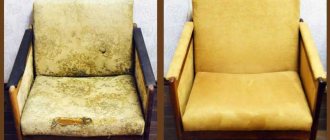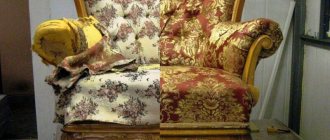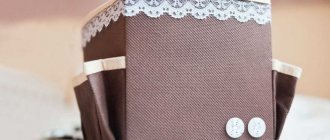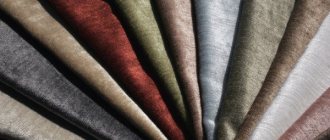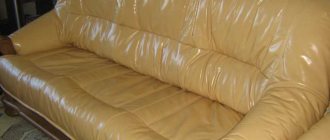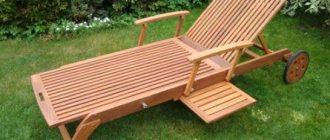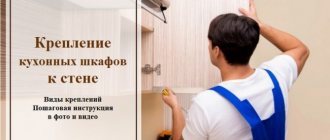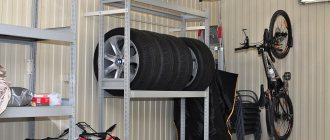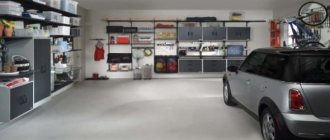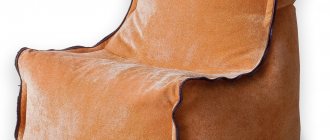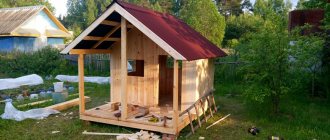Advantages of do-it-yourself reupholstery
The undoubted advantage of such work is the significant time savings - you do not need to wait for the master to arrive, and sometimes you do not have to take the furniture to the workshop, which will add additional financial costs to the family budget.
By choosing the necessary material, the appropriate color and doing the reupholstery yourself, you can get significant savings on the work of a specialist, the cost of whose services is quite high.
Upholstery of upholstered furniture is advisable in the following cases:
- there are significant damages in visible places (holes, stains, abrasions)
- noticeable deformation of the inner layer, expressed in noticeable recesses of the back and seat
- changing requirements for the external colors of upholstered furniture
Basic requirements for upholstery materials
Before you reupholster a chair with your own hands, it would be a good idea to learn about the materials used for these purposes.
The fabric used for upholstering upholstered furniture must meet several basic requirements. These include:
- strength qualities
- practicality of the material
- sufficient density
Properly selected material for upholstered furniture will be the key to long-term and high-quality operation in the future.
The most popular fabrics for such work are:
- flock
- nubuck
- jacquard
- eco leather
Each of the above materials has its own advantages and disadvantages; having studied their qualities in more detail, you can choose exactly the fabric that will meet the operating conditions.
Removing external parts
Step-by-step instructions on how to move a chair at home could not be completed without removing the outer frame. Almost always this is a support for the bottom, less often the side parts that go into the armrests.
At this stage you may have separate legs, no wheels - these will need to be removed too. Thus, we have a very interesting picture: externally, the upholstery of the chair does not hold anything, so we can start removing it.
Flock for upholstery of upholstered furniture
Essentially, such fabric is a synthetic material made by applying synthetic fibers to a non-woven polymer base.
The advantages of this material include:
- great appearance
- pleasant to the touch
- quite long service life
- low price
Along with its positive qualities, flock has a number of disadvantages:
- the material is not breathable
- possibility of allergic reactions
- requires special care products
This type of fabric is advisable to use for furniture in a home where there are pets. Due to the nature of the production of such material, animals cannot remove the internal fibers from the outside, which cannot be said about ordinary fabric. Thanks to this quality, upholstered flock furniture retains its attractive appearance for a long time, despite the presence of pets.
Choice of upholstery fabric
Self-upholstery will help restore the product's attractiveness and save money. A standard chair becomes unique and designer. If you organize the process correctly, the entire work will take no more than one day. Restoration is necessary in certain situations:
- the filler has already changed shape;
- depressions appeared in the seat and back;
- there are stains or damage on the upholstery;
- The product does not match the style of the room.
First of all, reupholstering old chairs is needed to change the type of piece of furniture. The leading role is played by upholstery fabric. It must be durable, wear-resistant, and retain consumer qualities for a long time. The fabric must also keep its shape well, be cleaned of dirt, be dense and tear-resistant.
You can restore an old chair using any textile, leather, denim, flock, velor and other materials. If there are cats in the house, select raw materials that do not form snags on the surface (flock). For the children's room, where the risk of potential contamination is high, soft fabrics that are resistant to cleaning and abrasion (chenille, matting) are selected.
In the living room, more attractive options made of nubuck, tapestry, leather, and jacquard are appropriate. If there is a lot of smoking in the room, you should give preference to fabrics that do not absorb odor. The latter include chenille. An additional advantage of the upholstery will be moisture-repellent properties, Teflon or acrylic impregnation. The denser the product, the longer it will retain its original appearance.
The best models of bean bags, features of selection and operation
Flock Chenille
Velours
Microfiber
TapestryJacquardLeather
This is interesting: How to choose a folding garden chair?
Nubuck for upholstery of upholstered furniture
As a rule, an artificial analogue of nubuck is used for the manufacture of upholstered furniture.
Despite this, this material has an attractive and solid appearance. Due to the manufacturing features, the material is quite resistant to external influences.
The advantages of nubuck are:
- wear resistance and durability
- nice appearance
- pleasant to the touch
The main disadvantage of this material is its high cost in comparison with conventional upholstery materials.
Along with the use of nubuck when reupholstering home upholstered furniture, it can also be used for reupholstering car seats.
Choosing a filler
If the inside of the sofa is perfectly preserved and does not require replacement, then this step should be skipped, going straight to creating a pattern and reupholstering.
If the sofa has exhausted its resources, then its filler should be replaced, which can be of the following types:
Periotec
Non-woven material that includes natural fibers (coconut, flax, corn) and artificial components that hold their shape well and also provide elasticity and strength. The material is hypoallergenic, and its characteristics are quite capable of competing with a spring block.
Sintepon
A more budget-friendly option in the form of non-woven fabric, which is sold in rolls. By increasing the layers of padding polyester, you can adjust the degree of rigidity of the sofa itself. It is usually used as a layer between upholstery and polyurethane foam, which makes the surface soft.
Polyurethane foam
A highly porous material that holds its shape well, while being soft and comfortable enough to fill the seat and back of the sofa. It is absolutely safe for health, has a long service life, does not accumulate dust and unpleasant odors.
Spring block
Made to order according to your measurements, or selected from those options that are available. Keeps its shape perfectly and does not sag. It needs a felt layer that will protect the foam from the effects of springs.
Struttofiber
It is called “non-woven independent springs”, which perfectly retain pressure, distributing it evenly over the entire surface. It is one of the most practical and durable fillers today.
If you are in doubt about which filling will have the best qualities specifically for your sofa, then try forming a sandwich from struttofiber, polyurethane foam and felt. This combination will be the most advantageous, since the struttofiber holds its shape perfectly, the felt protects it from sagging at a specific point of constant pressure, and the top layer of polyurethane foam provides the necessary rigidity.
Jacquard for upholstered furniture
The described fabric is widely used in furniture production due to such qualities as density and rigidity. The fabric has such qualities due to certain features in its manufacture - it is not subject to unraveling.
The advantages of jacquard include:
- practicality and durability
- pleasant to the touch
- inclusion of cotton threads suggests good ventilation
The disadvantages of jacquard fabrics include their rather high cost.
The fabric can be used both for upholstering home furniture and for upholstering office chairs, which is advisable due to the ventilation properties of the fabric.
Useful tips
If you are determined to reupholster the furniture yourself, you need to know special tricks that will help you avoid ruining your favorite chair. There are contraindications to self-stretching, these include:
- The furniture has a complex geometric shape.
- Furniture should be upholstered with natural fabric or very expensive material.
- The furniture is expensive or antique.
In this case, it is better not to take risks and trust the professionals. Correctly reupholstering an office chair has fewer subtleties, but this is also not a simple matter. The main thing is to follow the instructions and have at least the slightest idea of how to disassemble and assemble furniture.
When choosing upholstery, do not forget to take into account the overall interior of the room, the chair should fit into it, and the fabric itself should match the room. The old upholstery must be removed very carefully, as it will serve as a convenient template for creating new covers. The pattern on the fabric must match on all parts of the upholstery.
If you have never reupholstered furniture, try to start with the simplest thing - it could be a stool, ottoman or an old chair that is not particularly valuable. Thanks to these tips, renovating old, worn-out furniture will be successful and will be an enjoyable and exciting experience for you.
Eco-leather for upholstery of upholstered furniture
It is a fairly common material for furniture upholstery. It is used for covering both soft and hard elements of furniture construction.
The advantages of eco-leather include:
- great appearance
- the material is resistant to tearing and rubbing
- pleasant tactile sensations
The disadvantages of the material include difficulties in masking damage, so for owners with pets, reupholstering an old chair with eco-leather with their own hands can cause additional problems.
Necessary tools for reupholstering furniture
In addition to upholstery fabric, for covering upholstered furniture, you should prepare the following tools:
- stationery knife
- wood stapler with staples
- a set of tools necessary for removing old coating
- equipment for cutting future cladding; if you don’t have it, you can get by with a strong needle or awl
- furniture foam rubber, if the old one has become unusable
Depending on the type of upholstered furniture structure, the tools for disassembling and assembling it may vary slightly.
How to drag a wide chair into a narrow doorway
There is one trick or, as they call it now, a life hack. It will be possible to fit a very wide chair into a narrow doorway if there is enough free space on either side of it so that you can wrap the back of the furniture behind it.
Dragging a chair sideways with the back facing forward
If the length of the chair from the floor to the armrest is less than the width of the opening, then you can move the chair if you position it for transfer in a special way - sideways and back forward. To avoid damaging the furniture and chair, you can first place it on a thin blanket or bedspread. You should also take care in advance not to touch the wires located on the floor or walls when moving.
The simple transfer process is described in detail, and the photos will help you understand clearly how it should be done.
The chair is too wide Step 1: place the chair on its side with the back facing forward Step 2: pull the furniture through the opening
The chair needs to be placed on the floor sideways and dragged backwards. As soon as the back of the chair passes through the doorway, you need to turn the backrest around the corner (turn it around the corner opposite to the backrest), as a result of which the chair will turn with the narrower part and now you can drag the remaining narrower part of the chair. The whole process turned out to be very simple and quick in practice.
Step 3: Turn the back around the corner
Step 4: Pull out the narrower part
If there is very little space on the sides of the doorway, this trick may not work, so you should make sure in advance that there is enough free space on the sides.
If a chair that is too wide cannot be pulled out into a narrow doorway, you will still have to unscrew it, disassemble it into parts, move them to the right place and then reassemble and twist it there. If possible, you should take photographs of the disassembly process to make it easier to reassemble the furniture later.
Features of disassembling upholstered furniture
Before starting work on removing old upholstery, it is necessary to dismantle structural elements that may interfere with its dismantling.
The fabric must be carefully removed, trying to avoid damage, as it will help to obtain a pattern for future covering.
It is advisable to combine the restoration of the external upholstery with the restoration of the frame of the product. Damaged parts are repaired and, if impossible, replaced with new ones.
Weakened areas of the wooden structure are stretched or reinforced with additional screws.
Before starting assembly work, wooden parts are cleaned of dust and dirt. Foam rubber that has visible deformation must be replaced.
Cutting material for reupholstery
You should buy upholstery material after measuring the old fabric. To the obtained measurement result, it is necessary to add an additional 10-15 percent of the area of the old cladding.
The easiest way to get the correct pattern is to transfer the old dimensions to the new material by overlapping and tracing it with chalk with a small margin.
In cases where the elements of the old cladding consist of several parts, they are sewn together using a sewing machine, after cutting.
Assembly work on reupholstering furniture
Upholstered furniture is assembled in the reverse order.
Instead of old foam rubber, filler (foam rubber) is placed in the back of the chair; in cases where the material is thick, sharp corners should be smoothed out using a stationery knife.
Batting is placed on top of the foam rubber and secured to the back wall. The material should be well stretched and free of folds and sagging.
The finished upholstery material is applied to the filler and secured with staples around the entire perimeter, with simultaneous tension.
The cladding of the remaining structural elements is carried out similarly.
After finishing work on covering all structural elements, they proceed to assembling the furniture. Assembly is carried out in reverse order.
The back wall of the chair is secured last with staples along the entire perimeter of the back of the chair.
Reupholstering upholstered furniture is not something complicated. A person who has minimal skills in working with a tool can easily cope without experiencing any difficulties. If you have any questions, you can always refer to the video tutorials on how to reupholster a chair with your own hands.
Consolidation
Reupholstering a chair-bed begins with securing the material to the side of the backrest. The staples are located at a distance of approximately 10 cm from one another. It is advisable to start from the middle.
When you finish one side, move to the other. Stretch the fabric and secure it in the same way. It is important to avoid wrinkles. Excess fabric is trimmed. The corners are formed. They are also secured with a stapler. Holes are cut for self-tapping screws or bolts.
The seats are reupholstered in the same way. For a chair-bed, it consists of two parts.
